B-- Breakfast L-- Lunch D-- Dinner
-
Day 1 Lhasa Arrival
Welcome to the roof of the world! You will be picked up by local tour guide at the airport hall or train station, then be escorted to your hotel in Lhasa city in a private vehicle.
After arrival at your hotel, the rest of the day is free for you to explore the local areas and acclimatize yourself to the air, temperature and high altitude of Lhasa.
High Altitude Acclimation Tips:1) go for some leisure walking to acclimate the high altitude but avoid strenuous activity after arrival; 2) you'd better not have bath, in case of catching a cold; 3) drink more water, and have some fruit; 4) have a good rest...
Accommodation: Stay overnight in Lhasa.
-
Day 2 Lhasa ( B )
Start today’s Lhasa exploration with an exciting visit to the landmark - Potala Palace which is regarded as one of the most beautiful architectural building in the world. You will climb up the palace along the zigzag stone paths with white-and-red walls to the top of the palace where you can not only appreciate the exotic Tibetan-style architecture, but also get a great view of Lhasa’s urban areas, then walk into the inner space of Potala Palace to explore the stately chapels and learn about the history of the palace.
Continuing your exploration, you will then get to Jokhang Temple which is considered as the spiritual heart of Tibetan Buddhism. Each day, there are thousands of pilgrims coming from different places in Tibet to the temple to worship to the Buddha. This temple is also known as the “house of Buddha” because it keeps the precious Jowo Rinpoche, the life-sized (5 foot/1.5m) image of the Shakyamuni at the age of 12. The last site for today’s exploration is the famous Barkor Street. It is a circular and wide street encircling the Jokhang Temple. The local people like to walk on the street for several circles usually in the late afternoon as a daily tradition of pilgrimage. The street also has many shops selling a wide variety of traditional Tibetan goods, religious items and handcrafts.
Tips of today: 1) there are 1,080 steps up to climb to the top of Potala Palace, so don’t walk in a rush, which may cause high altitude sickness; 2) taking photos is not allowed inside the palace; 3) today you will be mainly outside, please bring some water, a hat, sun cream, and sun glasses with you.
Accommodation: Stay overnight in Lhasa.
-
Day 3 Lhasa ( B )
After breakfast, you will firstly go to visit the beautiful Norbulingka which used to be the former summer palace of Dalai Lamas in the ancient time, and now is a public park. It is famous for its Potrang, the private palaces of former Dalai lamas with grandiose Tibetan architecture style. Next, drive several kilometers to the western outskirts of Lhasa to visit Drepung Monastery. Drepung, in Tibetan, means “prosperity”. Since its establishment, Drepung Monastery has always been one of the most important Buddhist monasteries in Tibet. In its heyday, there were more than 10,000 monks lived and studied in the monastery. Throughout its history, many important and famous Tibetan leaders used to study here, especially the Dalai Lamas. So Drepung Monastery is also respectfully known as the “Mother School of Dalai Lamas”.
In the afternoon, you will be taken to another famous monastery in Lhasa - Sera Monastery. It is famous for the spectacular “Buddhism Debating”. As a daily routine, the monks gather in a courtyard, and debate on the Buddhist doctrines with supplemented gestures, which is thought to be helpful to facilitates better comprehension of the Buddhist philosophy to attain higher levels of study. After enjoying the "Buddhism Debating", you will be transferred back to the city. The rest time is your own free time to rest.
The Etiquette of Visiting Monastery: 1) you shouldn’t wear short and uncover shoulders; 2) taking off your sunglasses and hat before entering the chapels; 3) taking photos is usually not allowed inside the chapels.
Accommodation: Stay overnight in Lhasa.
-
Day 4 Lhasa - Namtso Lake ( B )
Want to explore some other features of Tibet instead of the monasteries? Let's take an exciting trip to the holy lake Namtso which is about 5 hours driving from Lhasa City. You will arrive at Namtso Lake around the early afternoon. Take some rest and throw yourself into the incredible landscape of holy lake.
Namtso Lake is the highest saltwater lake in the world with an altitude of 4718 meters, also the second largest saltwater lake in China (after the Qinghai Lake). It’s quite common for tourists who are awestruck at the Namtso at the first sight. With the snowy mountains in the background, the crystal-clear dazzling blue water, Namtso is stretching to the horizon. In clear days, the lake looks like a beautiful turquoise surrounded by magnificent snow-capped Tanggula Mountains, and the lakeshore is green, wide and open, dotted with tents, yaks and sheep of local nomads. For travelers, Namtso is the ideal place for photography, while for Tibetans, it is a scared and magical lake for pilgrimage.
Lastly, drive back to Lhasa for accommodation.
Tips of today: 1) the altitudes of Namtso Lake region is about 5, 000 meters, so you should be fully prepared for high altitude sickness. Do remember to keep warm all the time and avoid strenuous activity; 2) if you want to spend longer time and watch sunset and sunrise, you can also accommodate at Namtso for a night, but the accommodation condition is very basic, so is the food supply.
Accommodation: Stay overnight in Lhasa.
-
Day 5 Lhasa - Shigatse / 360km, Abou8 6hrs's Driving ( B )
Today, you will leave Lhasa and drive about 8 hours to Shigatse, the second largest city in Tibet. It may be a long journey, but there are many things to do along the road. The first site you will reach is the holy Yamdrok Lake (altitude: 4,400m). As the largest fresh lake in the northern of the Himalaya Mountains, it spreads about 675 square meters from south to north, like an eardrop lying in the arms of snow-capped giant mountains. Viewing from a distance, you can see fertile pastures full of yaks and sheep, and some small Tibetan villages along the lakeshore. Keeping driving not so far from Yamdrok Lake, you will see the imposing Karola Glacier (altitude: 5,045m) towering aloft on the right side of the road.
Continuing your trip, you will get to the historical city of Gyantse. Feel hungry? Have a good lunch in the town, then go to visit the mysterious Palcho Monastery (altitude: 4,040m). The monks and tradition of three important sects of Tibetan Buddhism - Sakyapa, Zhalupa and Gelukpa, peacefully coexist in this monastery. Its Kumbum, which is 35 meters high and has 76 small chapels with hundreds images of Kriyatantras , is believed to be the largest such structure in Tibet.
After the Gyantse sightseeing, keep drive about 3 hours, you will arrive at your hotel in Shigatse (altitude: 3,800m). Have a good rest!
Tips of today: 1) wear warm clothes to prevent from cold and wild; 2) pack some food and drinks with you because you will spend much time on the road.
Accommodation: Stay overnight in Shigatse
-
Day 6 Shigatse - Mount Everest / 350km, About 7hrs's Driving ( B )
Today, you will leave Shigatse for the final destination of your Tibet trip - Mount Everest. Though being a long driving of about 7 hours, but the views along the road are stupendous. In clear days, you can see the clear face the Himalaya range including several famous peaks over 8,000 meters, such as Makalu, Lhotse, Gyachung and Cho Oyu. When you finally get to the Rongbuk Monastery (altitude: 4,980m), and get the first sight of the mighty Everest, you will immerse in a solemn ethereal mood and find all the efforts you have made along the long way are not in vain. Located about 5100 meters above the sea level, Rongbuk Monastery is the highest monastery in the world. It is the best location to take some great photos of the front face of Mount Everest. The rest of today is free for you visit the Rongbuk Monastery and explore surrounding landscape.
Accommodation: if you visit Mount Everest during off season (November to April), you will accommodate at Rongbuk Guest House near the Rongbuk Monastery; if you visit Mount Everest during the peak season (May to October), you will accommodate at the Tibetan Tents Camp which is about 4km further from Rongbuk Monastery. Please note that the accommodation condition at both places are very basic. Only dorm beds are available.
Tips of today: 1) prepare more food and drinks for long driving; 2) bring a warm and thick coat for low temperature in Everest; 3) avoid strenuous activity to prevent from high altitude sickness.
Accommodation: Stay overnight in Mount Everest
-
Day 7 Mount Everest - Gyirong Town / 370km, About 8hrs' Driving
Wake up early to enjoy the marvelous sunrise on the peak of the world. Then drive about 4km further to Tibetan Tents Camp (altitude: 4900m) where you can enjoy a closer view of Mount Everest.
The top part of the Mount Everest is always covered by snow all the year round, and when the sun shines on the mountain, the peak is like a giant white pyramid, which is one of the most famous sceneries of Mount Everest. In bright days, you can also see a wisp of cloud hanging above the top of Mount Everest. It flies eastward in the fast western wind just like a flapping flag. This unique phenomenon is the spectacular “Cloud Flag”. The cloud will change from surging waves into a thin cooking smoke or from galloping steeds into the mysterious veil of a goddess.
Till now your Mount Everest adventure is about to end. The rest of today is to drive to Gyirong Town. The views along the road are stupendous. In clear days, you can see the clear face of Shishapangma Peak and enjoy the beautiful view of Pekutso Lake.
Accommodate at Gyirong Town.
Tips of today: 1) to protect the environment of Mount Everest, currently Everest Base Camp is not open for tourists – the Everest landscape can be enjoyed at Rongbuk Monastery and Tibetan Tent Camp as well. The base camp marker, a tablet reading “Mt. Qomolangma Base Camp” has been transferred to the Tibetan Tent Camp. You are suggested to take a photo at the marker to commemorate your wonderful adventure tour; 2) the sunrise usually starts around 6:30 am to 7am on Mount Everest; 3) keep warm all the time.
Accommodation: Stay overnight in Gyirong Town
-
Day 8 Gyirong - Kathmandu / 185km, About 7~8hrs' Driving ( B )
Today, you will leave the territory of Tibet. Drive about 25km to the Gyirong Port where you will walk across the custom to Nepal territory and transfer to Kathmandu. Though the distance is only about 160km, it takes more than 6 hours to drive to Kathmandu from Gyirong Port because the road is narrow and bumpy. During the rainy season, the road is muddy and may be closed for the landslides.
Accommodation: Stay overnight in Kathmandu
-
Day 9 Kathmandu - Pokhara (B) / About 25 minutes' Flight ( B )
After breakfast, you will visit Bhaktapur which is one of three medieval city-states in the Kathmandu Valley as well as the best preserved one with an altitude of 1,401 meter. With three different styles square - Durbar Square, Taumadhi Square and Dattatreya Square, it is the best place to explore traditional Nepalese architecture and local life and custom, also the best place to witness the great achievements of arts and crafts created by the famous Nepal's Malla Dynasty (1201–1769). Bhaktapur is also famous as the Town of the Devotees. There are many devout Hindus and Buddhists living in the city.
Leaving Bhaktapur, you will head to - Patan, once a glorious independent kingdom, but now almost a suburb of Kathmandu city. It is known for the crowding Patan Durbar Square which is honored as the finest collection of temples and palaces with exquisite carvings in the whole of Nepal. It also attracts tourists with the treasures and souvenirs in the various shops around the square. The square consists of three main chowks, or courtyards - the central Mul Chowk, Sundari Chowk and Main Keshab Narayan Chowk.
After the sightseeing, driving to the airport and catch your flight to Pokhara.
Accommodation: Stay overnight in Pokhara
-
Day 10 Pokhara ( B )
Today, you will begin the full-day sightseeing of Bokhara. In the early morning, you will drive to the Sarangkot to watch breathtaking sunrise. When the sun picks out the peaks, they are transformed from a purple-pink to a celestial gold. As the day breaks thoroughly, you can admire a wonderful panoramic sweep of Himalayan peaks from west to east. The view of the Annapurna Himalaya from Sarangkot is praised as a religious experience. After the spectacular sightseeing from Sarangkot, you will drive to Peace Temple to see the brilliant-white World Peace Pagoda. The road to the pagoda is not in very good condition, but scenery is stunning. World Peace Pagoda was constructed by the Buddhists from Japanese Nipponzan Myohoji organization, symbolizing the peace of the world. While seeing the enchanting natural sights around, you will also get a feeling of inner peace as well.
After lunch, you will visit Devil’s Fall, locally known as Patale Chhango (Hell’s Fall). It is an awesome waterfall lying about 2 km south-west of Pokhara Airport on the highway to Tanmen. Then, pay a visit the nearby Gupteswar Gupha, which is a sacred cave. It has some big hall-size rooms and some passages where you have to crawl on all fours. Afterwards, you will have a relaxed journey in Phewa Lake which is the second largest lake in Nepal. It is available to take to the lake with one of the beautifully painted boats or walk/cycle around the lakeshore. The most important religious monument in Pokhara, Barahi Temple, is built almost in the middle of Phewa Lake. The two storied pagoda is dedicated to boar manifestation of Ajima, the protector deity representing the female force Shakti.
Accommodation: Stay overnight in Pokhara
-
Day 11 Flight from Pokhara to Kathmandu / About 25 minutes' Flight ( B )
After having breakfast, you will move towards Pokhara Airport and fly to Kathmandu. Today’s activities start with a wonderful stroll around the grand Kathmandu Durbar Square, which is the social, religious and urban focal point of the city. With the complex made between the 12th and 18th centuries by the ancient Malla Kings of Nepal, it provides many interesting things to see, like Taleju Temple, Kal Bhairab (God of Destruction), Nautalle Durbar, Coronation Nasal Chowk, the Gaddi Baithak, the statue of King Pratap Malla, the Big Bell, Big Drum and the Jagnnath Temple etc. Then you will visit the Kathmandu’s most ancient and enigmatic holy shrine – Swayambhunath, also known as “Monkey Temple”. It lies 2km west of Kathmandu City. On the clear days, you are able to see a line of Himalayan Ranges. From its hilltop setting, you can get a fine view over Kathmandu of and the valley. After that, follow a contrast tour to the giant Buddhist stupa – Boudhanath, the largest stupa in Kathmandu Valley at about 131ft (40km) high and one of the largest and most important Buddhist stupas in the world. The all-seeing red, white and blue eyes of Buddha are painted on all four sides of the stupa, similar to Swayambhunath, and surrounded by hundreds of fluttering prayer flags, prayer wheels and small images of Buddha.
Optional Activities: you can choose to take a Everest Mountain Flight in the early morning. From the airplane, fantastic Himalayan peaks, lakes and glaciers can be witnessed.
Accommodation: Stay overnight in Kathmandu
-
Day 12 Flight from Kathmandu to Paro – Drive to Thimphu / About 1h's Flight & 1h15mins' Driving ( B, L, D )
Early this morning, your driver will meet you at your hotel and then take you to the airport to catch your international flight to Paro Airport, the sole international airport in Bhutan. If you sit near the left window of your plane, and fly in a clear day, you will be very lucky to enjoy a spectacular view of the Himalaya peaks, including the world’s highest mountain - Mount Everest (Alt: 29,029ft) and its neighbors - Mt. Lhotse (the world’s fourth highest mountain, Alt: 27,940ft), Mt. Makalu (the world’s fifth highest mountain, Alt: 27,838ft) and Mt. Nuptse (Alt: 25,791ft) as you approach Paro (Alt: 7,364ft).The captain’s broadcast introduction and the magazines on the plane will help you recognize these peaks.
Upon arrival, you will be greeted by your local travel guide and driver, and then be escorted to Paro Town to start your wonderful journey. You will firstly visit Bhutan National Museum where you are going to learn a crash course in Bhutanese rich culture and history. There are many impressive collections displayed in its five galleries, including traditional thangkas, festival masks, religious statues, interesting carvings, etc. Your next attraction is Rinpung Dzong, also known as Paro Dzong, which is reputed as the finest example of Bhutanese dzong. After appreciating these charming architectures in Rinpung Dzong, you could take a leisure walk through cantilever bridge and to Paro Town and witness national game archery, which is played almost every day on the ground.
After the sightseeing, drive about 1.5 hours to Thimphu, the capital of Bhutan Kingdom, for accommodation.
Accommodation: Stay overnight in Paro
-
Day 13 Thimphu Sightseeing - Drive to Punakha / 80km, About 2.5hrs' Driving ( B, L, D )
This morning you will start the day by visiting the National Memorial Chorten (shrine), a monument dedicated to the past 3rd king of Bhutan, Jigme Dorji Wangchuck. More than a memorial stupa, it is also one important religious center for Bhutanese daily worship. Then go to visit Traditional Painting School, a school where students are taught to make Bhutan’s 13 traditional arts and crafts, like painting, woodcarving, embroidery, statue-making and so on. Next, go to National Textile Museum which is a good place to display textile weaving – Bhutan’s living national art. You can not only feast on the beautiful costumes, but also learn about the type of textiles, the styles of local dress and the techniques of weaving. Last activity of today is visiting the national animal - Takin in Motithang Takin Preserve, a unique looking animal with the head of sheep and body of cattle.
Leaving Thimphu, drive through a forest of pine and hemlock, up to cross over the Dochu La Pass (Alt: 10142ft/ 3,050 m). From the place, you can enjoy the panoramic views of the majestic Himalaya Mountains. Keep driving along the winding road to the fertile valley of Punakha (Alt: 4430ft/ 1,350 meters).
Accommodate in Punakha Town.
Accommodation: Accommodate in Punakha Town.
-
Day 14 Punakha - Phubjikha ( B, L, D )
After breakfast, you will go to visit Punakha Dzong, situated in between Pho Chhu and Mo Chhu (male and female river). It once was the capital city and seat of government before Thimphu. It features with three docheys. Apart from the two dochey for administrative area, and monastery area, the additional one is the Hundred-pillar Assembly Hall with 54 pillars and exceptional murals. With white-brilliant walls, red roofs and the surrounding charming nature, Punakha Dzong is praised by as the most beautiful one in Bhutan’s 21 Dzong.
Next, you will drive toward Phobjikha Valley. In route, you will get amazed by the breathtaking beauty and serenity of the rich flora and fauna. When you reach Lawala Pass, you may spot some Yaks grazing in high altitude bamboo shrub along the road. Crossing the pass, you will descend to Gangtey Goempa, which is located on a forested hill overlooking the entire Phobjikha Valley. The whole complex of Gangtey Goempa is made up of central monastery, monks’ quarters, guesthouse and meditation centers. Have a good time in this monastery.
After the sightseeing, drive to your hotel and have a good rest.
Accommodation: Accommodate in Phubjikha
-
Day 15 Phubjikha - Trongsa ( B, L, D )
Today, you will continue driving to your next destination – Trongsa – the center of Bhutan historically and geographically. Enjoying a typical alpine environment, Trongsa is grown with various bush rhododendron trees and dwarf bamboos. In the valley, your eyes will be caught by the huge fortress of Trongsa Dzong. Stay overnight in Trongsa.
Accommodation: Accommodate in Trongsa
-
Day 16 Trongsa - Bumthang( B, L, D )
In the morning, pay a visit to Trongsa Dzong, another important dzong in Bhutan. The first two kings both ruled Bhutan from Trongsa Dzong, so it becomes a tradition that the crown prince serve as Trongsa Penlop before acceding to the throne. In the dzong, there are 23 independent lhakhangs. You will visit some of them to enjoy the fine design and exquisite decoration. After that, you will turn to the old tower of Trongsa, present Royal Heritage Museum with five floors exhibiting the precious Buddhist arts and royal collections. Like a copy of Padma Kathang (a biography of Guru Rinpoche written by his consort Yeshe Tshoyel), 500-year-old jacket of Ngagi Wangchuk and the football boots of fourth king.
After the sightseeing, go on with your journey Bumthang. The road zigazags rapidly above Trongsa but the surrounding scenery is great. As you reach Yotong La Pass (3,425m), you can see a Buddhist Stupa in Tibetan style and many colorful fluttering prayer flags. Driving downhill, you will arrive in the Chumey Valley. At Tsugney Village, witness traditional Yathra weaving. Next, drive to Jakhar, the main town in Bumthang for accommodation.
Accommodation: Accommodate in Bumthang
-
Day 17 Bumthang - Wangdu Phodrang ( B, L, D )
After the breakfast, you will go to visit Jampery Lhakhang, a monastery built by the Tibetan King Songtsen Gampo in 659. It is said that Guru Rinpoche once visited this temple, so the Sindhu Raja renovated it after Guru Rinpoche saved his life. In the inside hall is housed the statue of Jamba, the future Buddha, with his feet on the elephant. You can also admire the elegant murals in this temple.
Then drive to Wangdu Phodrang via Pele La Pass. The picturesque views can be seen as well. When you reach Pele La Pass (3420m), a brilliant stupa with colored prayer flags will come into your eyes. Passing through the pass, you will get to a viewing deck which offers an amazing view of Mt. Jomolhari and Jiuchu Drakye. Drive to Wangdu Phodrang and accommodate there.
Accommodation: Accommodate in Wangdu Phodrang
-
Day 18 Wangdu Phodrang - Paro ( B, L, D )
Start today’s journey in the early morning with a visit to Wangdu Phodrang Dzong, where you can get a commanding view of the below valleys. In fact, Wangdu Phodrang Dzong enjoys an important status in the history as well, and it was the second capital city in the early days. Since Wangdu Phodrang is situated on the ridge, you can walk down to the bridge and have a short hiking to the village of Rinchangang. After the wonderful sightseeing, you will drive to Paro via Dochula Pass again.
Accommodation: Accommodate in Paro.
-
Day 19 Paro - Takshang (Tiger’s Nest) About 20mins' Driving Plus 2~3hrs' Hike ( B, L, D )
Start the day with short drive to Paro’s upper valley. If the day is clear, you’ll have an unforgettable view of the “Goddess” – Mt.Chomolhari (23,640 feet).
Afterward, it’s a short drive to Taktsang trail ahead. Take a challenging but necessary 2~3 hours’ trek to Taktsang Monastery, the most famous monastery in Bhutan, also known as “Tiger Nest Monastery, because Guru Rinpoche reportedly flew to the site on the back of a flying tiger late in the 7th century. Between blue pines and a blue sky, the monastery perches miraculously on a cliff nearly 2,700 feet above Paro’s valley floor. Break along the way for tea and snacks in small tea house, and the view of both Taktsang Monastery and Paro Valley is magnificent.
Hike down the mountain, then drive back to Paro for accommodation.
Tips: 1) it takes about 2 ~ 3 hours to trek from the parking lot to Taktsang Monastery, and you could ride a horse for the first hour; 2) photography is strictly forbidden in the monastery, but you can take a nice shot on your road to Taktsang Monastery; 3) travelers have to deposit all belongings (cameras, phones or other electronic equipment and bags) at the entrance.
Accommodation: Accommodate in Takshang
-
Day 20 Paro Departure ( B )
Your journey in Bhutan comes to an end today! After breakfast, your guide will pick you up from the hotel to the airport in time for the scheduled flight to your next destination. Before that, you can take a rest at the hotel or go for a walk nearby.
Tips: Please pack your luggage carefully, especially for small things like camera charge, power adaptor, mobile phone, phone charger, wallet and towel. If your flight is arranged in the afternoon, please make sure you check out the hotel before 12pm.
Accommodation:

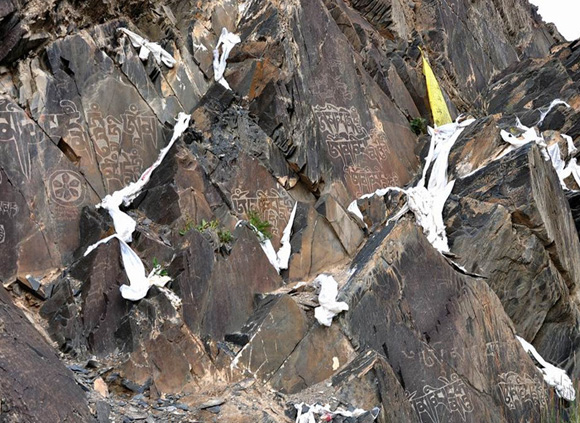 6 Days Nagchu Horse Racing Festival Tour
6 Days Nagchu Horse Racing Festival Tour 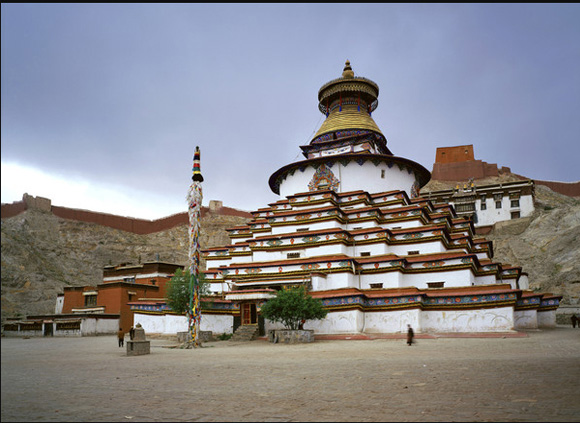 16 Days Gama Valley Trekking Tour
16 Days Gama Valley Trekking Tour 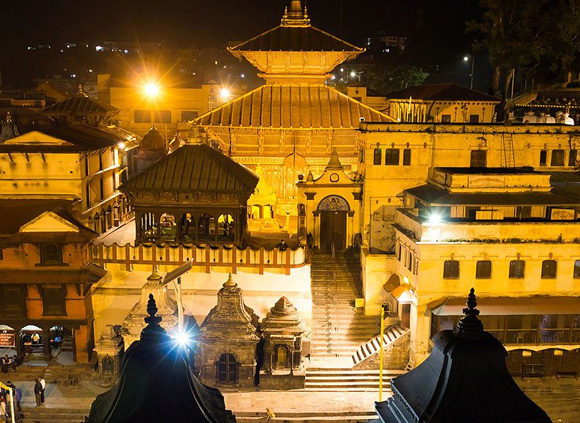 7 Days Lhasa - Gyantse - Shigatse Tour
7 Days Lhasa - Gyantse - Shigatse Tour 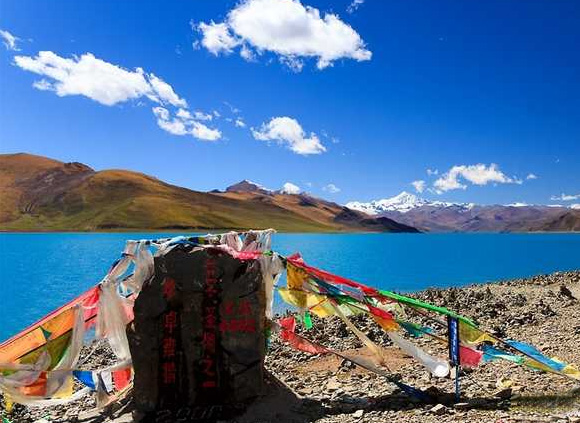 15 Days Mt. Kailash Trekking Tour with Guge Kingdom
15 Days Mt. Kailash Trekking Tour with Guge Kingdom 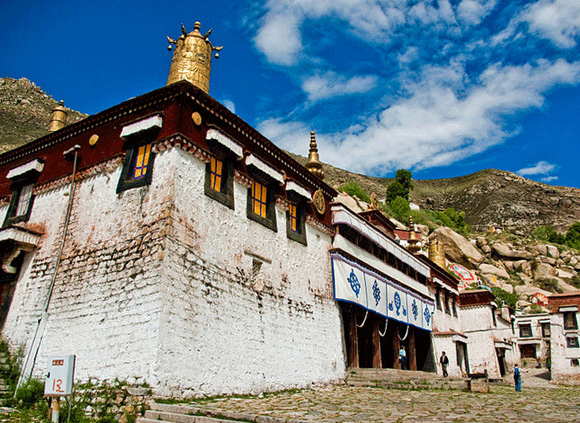 10 Days Train Tour from Beijing to Lhasa
10 Days Train Tour from Beijing to Lhasa 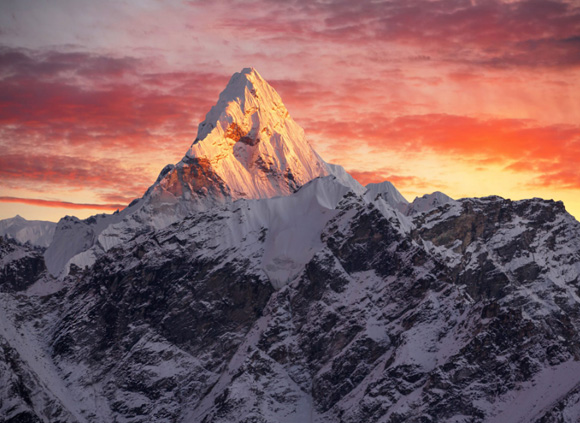 18 Days Cycling Tour from Golmud to Lhasa
18 Days Cycling Tour from Golmud to Lhasa 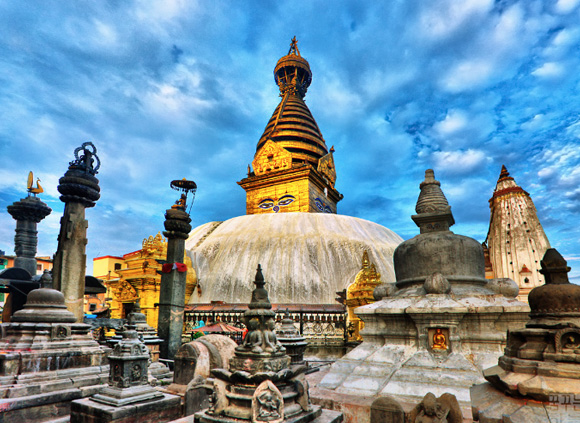 4 Days Lhasa Urban and Suburb Tour
4 Days Lhasa Urban and Suburb Tour 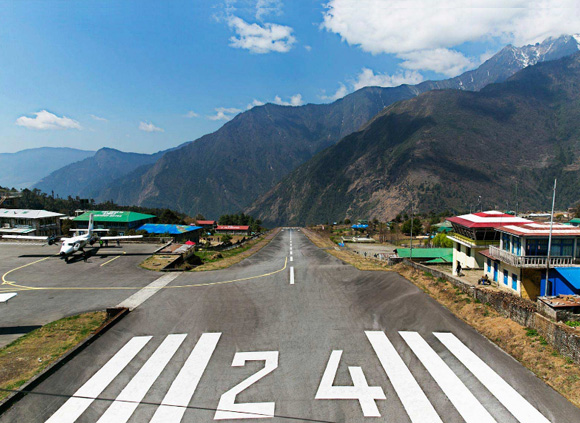 4-Day Lhasa Join-in Group Tour
4-Day Lhasa Join-in Group Tour 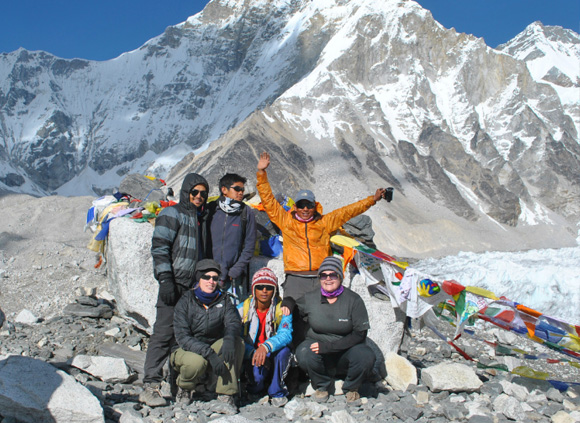 11 Days Nyingchi Peach Blossom Festival Tour
11 Days Nyingchi Peach Blossom Festival Tour 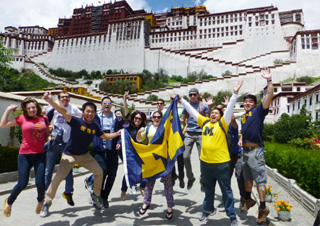
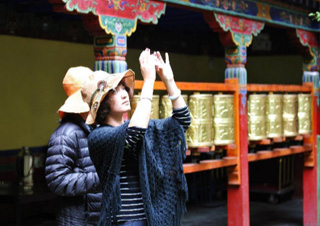
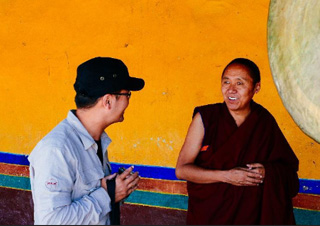
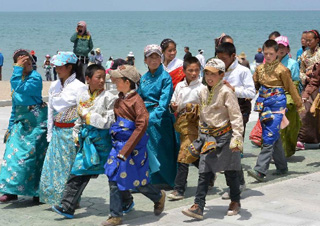
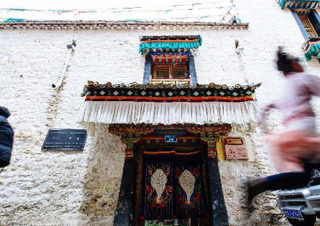
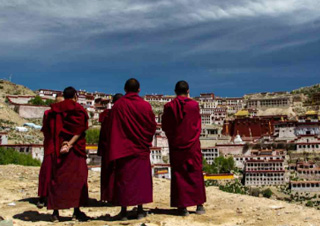
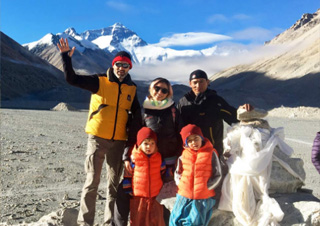
 Data in submission...
Data in submission...


